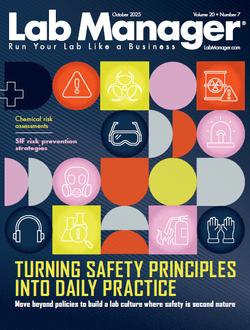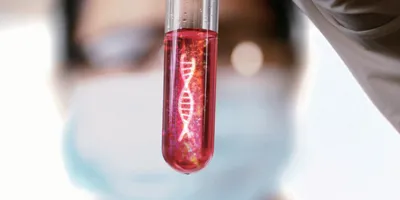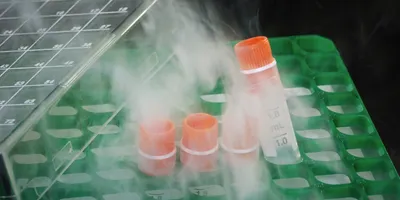Researchers from the National Institute of Standards and Technology (NIST) and University of Colorado Boulder (CU) have developed a low-power microchip that uses a combination of microfluidics and magnetic switches to trap and transport magnetic beads. The novel transport chip may have applications in biotechnology and medical diagnostics.
A key innovation in the new chip is the use of magnetic switches like those in a computer random access memory. As described in a new paper,* the NIST/CU team used the chip to trap, release and transport magnetic beads that potentially could be used as transport vehicles for biomolecules such as DNA.
Conventional microfluidics systems use pumps and valves to move particles and liquids through channels. Magnetic particle transport microchips offer a new approach to microfluidics but generally require continuous power and in some cases cooling to avoid sample damage from excessive heating. The NIST/CU technology eliminates these drawbacks while offering the possibility for random access two-dimensional control and a memory that lasts even with the power off.
The demo chip features two adjacent lines of 12 thin-film magnet switches called spin valves, commonly used as magnetic sensors in read heads of high-density computer disk drives. In this case, however, the spin valves have been optimized for magnetic trapping. Pulses of electric current are used to switch individual spin valve magnets “on” to trap a bead, or “off” to release it, and thereby move the bead down a ladder formed by the two lines (see video clip). The beads start out suspended in salt water above the valves before being trapped in the array.
“It’s a whole new way of thinking about microfluidics,” says NIST physicist John Moreland. “The cool thing is it’s a switchable permanent magnet—after it’s turned on it requires no power. You beat heat by switching things quickly, so you only need power for less than a microsecond.”
NIST researchers previously demonstrated that spin valves could be used to trap and rotate particles** and recently were awarded two patents related to the idea of a magnetic chip. ***
Magnetic tags are used in bioassays such as protein and DNA purification and cell breakdown and separation. The chip demonstration provides a conceptual foundation for a more complex magnetic random access memory (MRAM) for molecular and cellular manipulation. For example, programmable microfluidic MRAM chips might simultaneously control a large number of beads, and the attached molecules or cells, to assemble “smart” tags with specified properties, such as an affinity for a given protein at a specific position in the array. NIST is also interested in developing cellular and molecular tags for magnetic resonance imaging (MRI) studies in which individual cells, such as cancer cells or stem cells, would be tagged with a smart magnetic biomarker that can be tracked remotely in an MRI scanner, Moreland says. Automated spin valve chips might also be used in portable instruments for rapid medical diagnosis or DNA sequencing.
The lead author of the new paper, Wendy Altman, did the research at NIST as a CU graduate student working on her doctoral thesis. Another author, Bruce Han, was a CU student in NIST’s Summer Undergraduate Research Fellowship (SURF) program.
* W.R. Altman, J. Moreland, S.E. Russek, B.W. Han and V. M. Bright. 2011. Controlled transport of superparamagnetic beads with spin-valves. Applied Physics Letters, Vol. 99, Issue 14, Oct. 3.
** See 2007 Tech Beat article, “Magnetic Computer Sensors May Help Study Biomolecules,” at http://www.nist.gov/public_affairs/techbeat/tb2007_0510.htm#spinvalve.
*** U.S. Patent 7,981,696 B2, awarded July 19, 2011, and U.S. Patent 7,985,599 B2, awarded July 26, 2011. Inventors John Moreland, Elizabeth Mirowski, and Stephen Russek. Microfluidic platform of arrayed switchable spin-valve elements for high-throughput sorting and manipulation of magnetic particles and biomolecules.
Researchers from the National Institute of Standards and Technology (NIST) and University of Colorado Boulder (CU) have developed a low-power microchip that uses a combination of microfluidics and magnetic switches to trap and transport magnetic beads. The novel transport chip may have applications in biotechnology and medical diagnostics.
A key innovation in the new chip is the use of magnetic switches like those in a computer random access memory. As described in a new paper,* the NIST/CU team used the chip to trap, release and transport magnetic beads that potentially could be used as transport vehicles for biomolecules such as DNA.
To continue reading this article, sign up for FREE to

Membership is FREE and provides you with instant access to eNewsletters, digital publications, article archives, and more.










